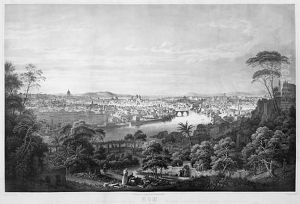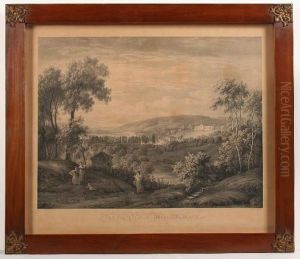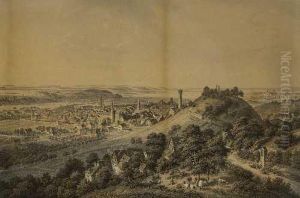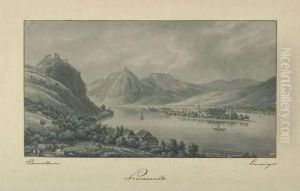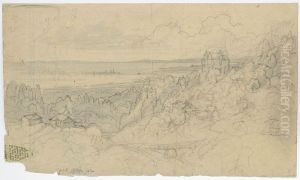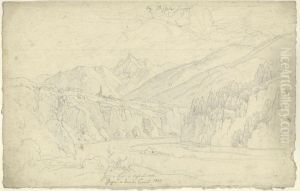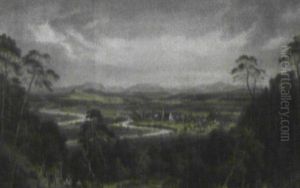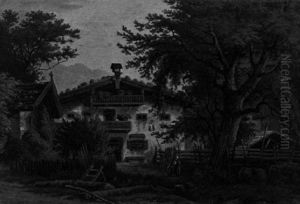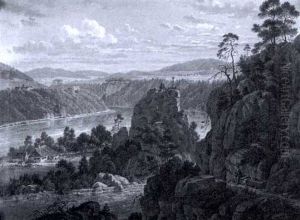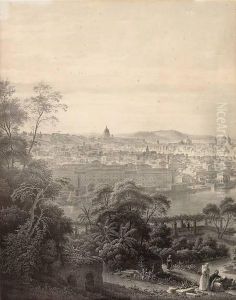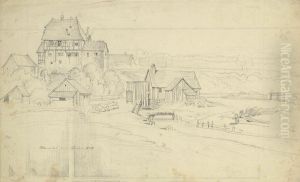Eberhard Emminger Paintings
Eberhard Emminger was a German artist known for his work as a lithographer, painter, and illustrator. Born on February 22, 1820, in Balingen, Württemberg, Emminger showed an early interest in the arts. His talent was apparent from a young age, prompting him to pursue formal training. He studied at the Stuttgart Art School where he honed his skills in drawing and painting.
Emminger's work is characterized by its attention to detail and its use of light and shadow, which is particularly evident in his lithographs. He became a prominent figure in the field of lithography, a printmaking technique that was very popular during the 19th century for reproducing images. This medium allowed Emminger to capture a wide range of subjects, including landscapes, portraits, and scenes of everyday life.
In addition to his lithographic work, Emminger was also a painter and illustrator. His paintings often featured landscapes and rural scenes, reflecting the countryside of his homeland. He also produced illustrations for books and magazines, which helped to disseminate his work to a broader audience. His illustrations often included a narrative element, which made them popular for storytelling in various publications.
Despite his success, Eberhard Emminger's life and career were relatively short. He died on October 29, 1876, in Stuttgart, Germany, at the age of 56. Although he is not as widely known today as some of his contemporaries, Emminger's contributions to the field of lithography and his artistic legacy in the realm of 19th-century German art remain significant. His works continue to be appreciated by collectors and art historians, and they offer a glimpse into the visual culture of his time.
